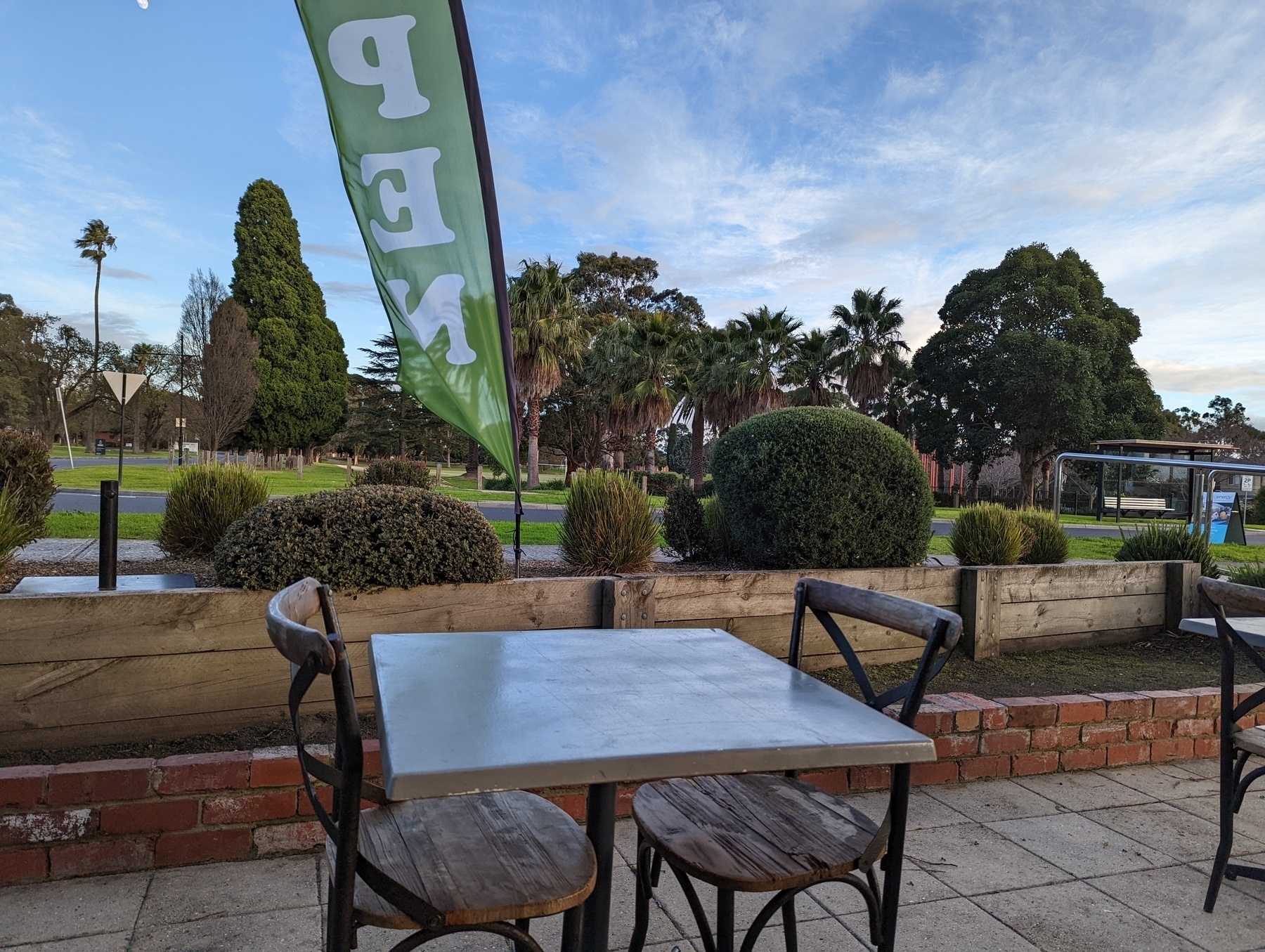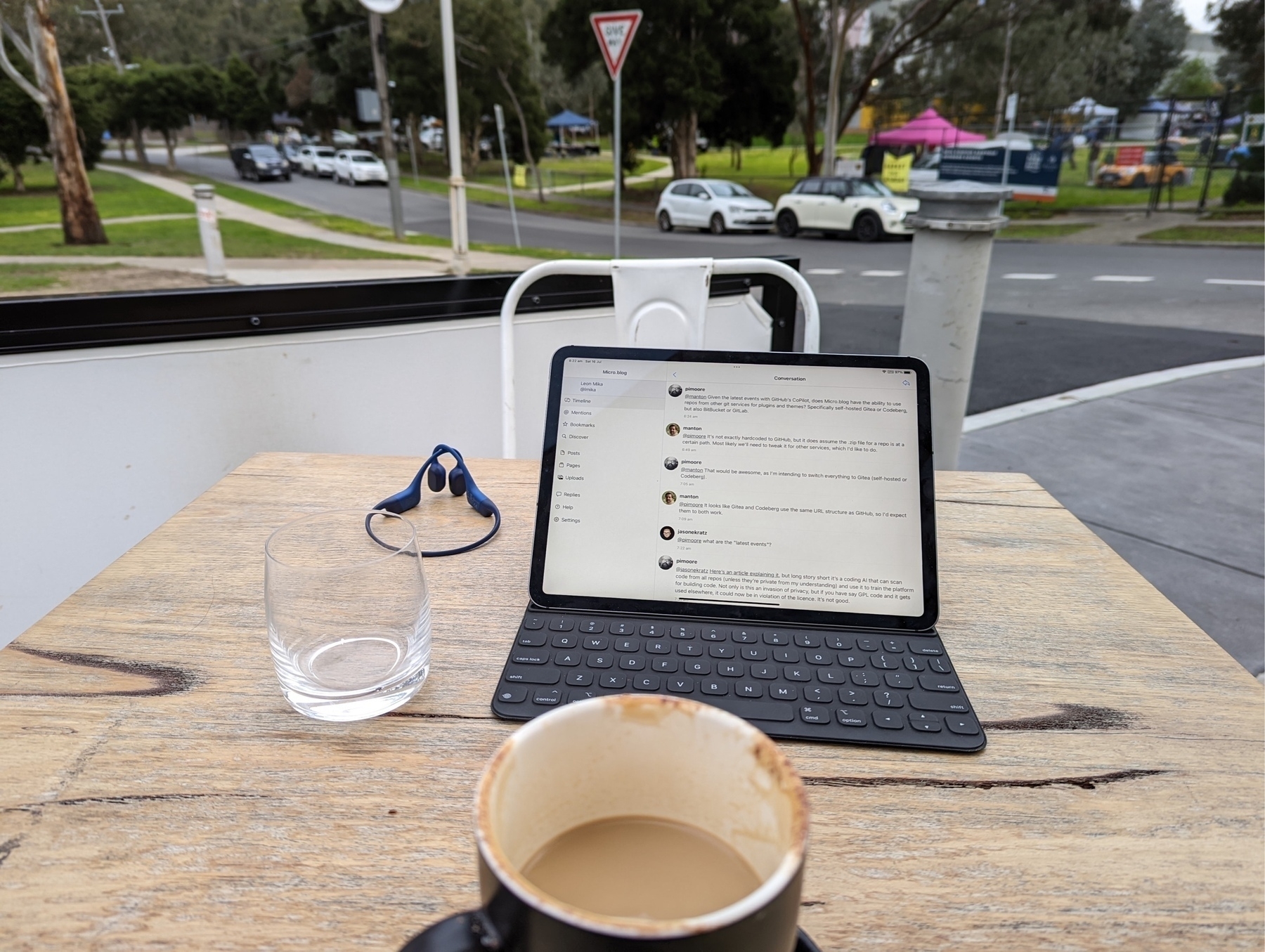-
A little hard to get through my regular Sunday routine today. I’ll do my best to keep at it though. It won’t solve all my troubles but sometimes just doing what you can to feel a little better will have to do.
-
Useful tip I learnt today about screenshots on MacOS: you can take a screenshot of a window without the drop shadow by holding down the Option key when clicking the mouse.
I wish I looked this up sooner, and not just turn to ImageMagick to try and remove the shadow myself.
-
Release Preparation & Next Steps
Finally finished the website for the Audax toolset and cut an initial release (v0.0.2). I’ve also managed to get binary releases for Linux and Windows made. I’ve started to work on binary releases for MacOS with the intention of distributing it via Homebrew. This is completely new to me so I’m not sure what progress I’ve made so far: probably nothing. For one thing, I’ll need a separate machine to test with, since I’ve just been installing them from source on the machine’s I’ve been using. Continue reading →
-
My Nonna bought me a set of winter gloves. This is actually my first ever set, and I can’t believe it took me this long to get a pair.

Made from a blend of wool, possum fur, and silk. Tried them out this morning in temperatures just above freezing. Wonderfully warm.
-
I really want to write something on my blog today, but the things going on right now are just making me annoyed. I don’t want this blog to be just things that I complain about: I haven’t got the wit for that to be interesting. I’ll just say that I’m looking forward to 5:00 today.
-
It’s good getting stuff released to production, so that users can get their hands on what you’ve been working on.
Unless it’s stuff that I’ve been building myself. Then it’s absolutely terrifying.
-
Covid-19 is making the rounds at work at the moment. A number of people have come down with it, posting photos of their positive RAT tests on Slack. RAT’s still coming up negative for me at the moment. I’m hoping it stays that way.
Come on booster. Don’t let me down!
-
Working on large software projects — complete with Jira boards, code coverage requirements, and peer reviews — it’s sometimes easy to forget that you can actually use the skills you have to solve the little problems you encounter in your job.
If you need to do something, and that thing can be done easily just by writing a small script, then don’t be afraid to go ahead and write one. It doesn’t need to be a fancy script. Doesn’t need to have unit tests or even be checked into a repo. It just needs to solve your problem.
This is probably one of the most useful things I’ve learnt in my career.
-
I’ve been seeing this message an awful lot recently when I’m trying to use mobile data. I originally thought it was Telstra, but now I suspect it’s Android, as restarting the phone seemed to have fixed it.

-
A New Name for Audax Tools (nee AWS Tools)
I think I’ve settled on a name for the project I’ve been calling “awstools”. “Settled” is probably a good word for it: I came up with it about a week ago, and dismissed it at first as being pretty ordinary1. But over that time, it’s been slowly growing on me. Also, I’ve yet to come up with any alternatives that are better. Anyway, the name that I’ve settled on is the Audax Toolset. Continue reading →
-
More Complaining About Autocorrect on MacOS
Earlier this morning: Me: (writing in my journal) Nonna, my 91 year-old grandmother… Autocorrect: Did you me “Donna”? Me: No, undo change. (continue writing) good news is that Nonna… Autocorrect: Did you me “Gonna”? I can forgive MacOS for considering nonna a spelling error, since it’s not an English word. But I do see why auto-correct on MacOS can be frustrating. Apart from the two completely random corrections it made for the same word, it also doesn’t seem to get the hint when I undo the change. Continue reading →
-
I’d be curious to know if a brand new user to Facebook would be able to get any value from it. Looking at screenshots of their app redesign, the whole thing looks convoluted and unintuitive. Is the sole purpose of Facebook now just to keep existing users from leaving Facebook?
-
AWS Tools: Documentation & The Website
Worked a little more on “awstools” (still haven’t thought of a good alternative name for it). I think the “dynamo-browse” tool is close to being in a releasable state. I’ve spent the last couple of days trying to clean up most of the inconsistencies, and making sure that it’s being packaged correctly. Now it’s documentation writing time. I’m working my way through a very basic website and user guide. It’s been a little while since I’ve written any form of user-level documentation — most of the documents I write have been for other developers I work closely with — and I admit that it feels like a bit of a slog. Continue reading →
-
Write It Down
I am feeling some very minor after-effects from the booster I took yesterday (nothing serious, just the expected cold-like symptoms). I was curious as to whether it was anything like I experienced in January, when I got my last booster. I went to my journal to see what I wrote about it. Unfortunately for me, there was nothing there. To be fair to my past self, there were some other events going on at the same time which I did write about. Continue reading →
-
Boosted. 💉💉💉💉
(also muffined up once again 🧁)
-
🔗 Publishing your work increases your luck (via Github’s The Readme Project)
I found this very inspiring. Given where it was published the subject matter is about software, but I believe that it could apply to pretty much any creative endeavour.
-
Had sprint review today. Overall, it went really well. Much better than last time. We didn’t quite clear the board but that was mainly because we finished the work we planned for and were simply pulling in tickets from the backlog.
-
Newsletter Reminder Emails
I subscribe to a newsletter that sends “reminder” emails if I skip an issue. If I don’t open one of the email newsletters I receive, then a few days later, a copy will be sent with a forward of the form “looks like you skipped an issue. Here what you missed.” These reminder emails are bad, and here’s why: It gives the impression of hustling me. I appreicate the time you take to publish something that I see value in, but sending these reminders feels like your forcing your content onto me. Continue reading →
-
Trying a new cafe this morning. I drive past this place all the time, and I keep telling myself I should try it. Fortunately it’s only a 15 minute walk from home.

-
Listening to the ATP #491 discussion on code formatting right now. I guess I’m not the only one that converted from BSD braces to K&R because it was the style used by “everyone else” (Go requiring this style helped a lot here). I will stand on liking the cuddled “else” though.
-
This is how I usually spend my Saturday mornings. One difference today was that a train-replacement bus drove by roughtly every 10 minutes or so which, given that it was the weekend, was more often than I expected (not that that’s a bad thing).

-
AWS Tools Dev Diary
A little more work on “awstools” today, mainly on a bit of a cleanup spree to make them suitable for others to use. This generally means fixing up any inconsistencies in how the commands work. An example of this is the put command, which now writes all modified items that are marked to the table (or if there are no marked items, all modified items) instead of just the selected one. Continue reading →
-
A lot of Slack messaging and organising calls with others today in order to get something finished for next week. These sorts of days are exhausting: where you’re simply reacting to things. Starting to settle down now though, given that we’re nearing the end of the day.
-
Shutting Down Blogging CMS
Ditching the CMS I was using for this blog is actually quite liberating. It means I don't have to spend any time trying to bridge the feature gap for what I need for a basic blogging CMS, and could focus on other projects. For example, I spent this evening working on "awstools": mainly coming up with a new name for it. I really can't use "awstools" as AWS is a trademark. Continue reading →
-
Had an excellent design session meeting this morning, but after 1.5 hours of talking, my voice is absolutely horase. Might need to consider improving my speaking skills and possibly even my voice strength. A microphone or headset might also be helpful.